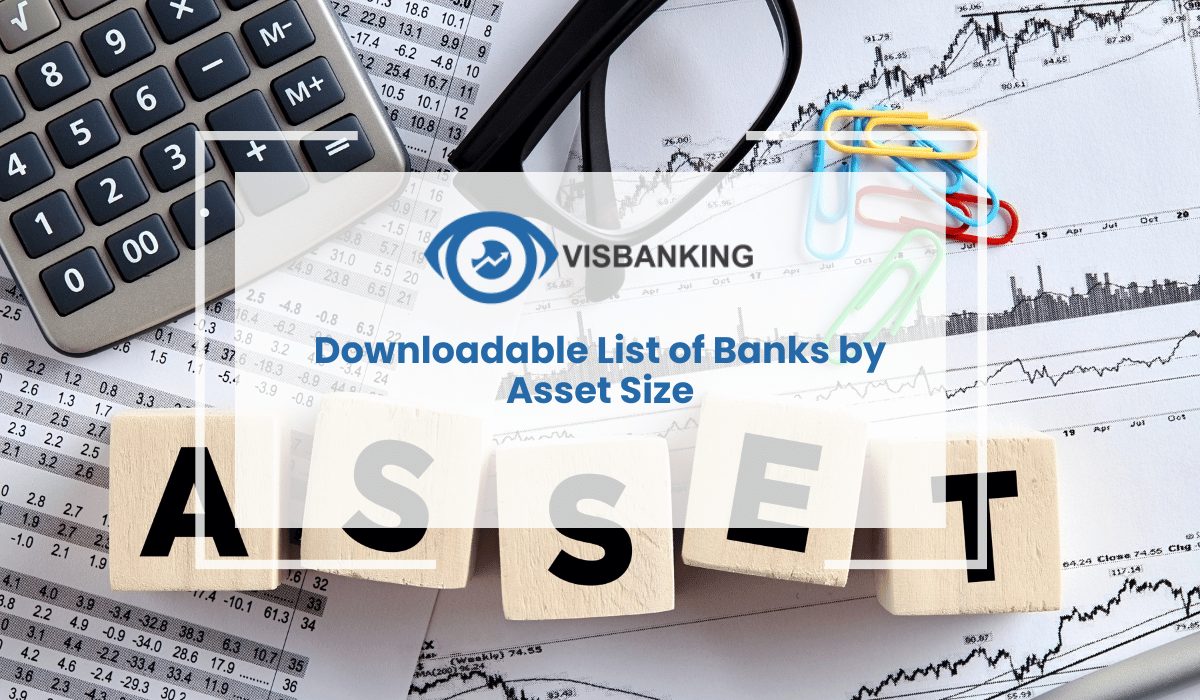Table of Contents
- Overview of Banks Listed in the USA by Asset Size
- Comprehensive List of Banks in California: By Asset Size
- Exploring the Top 50 Largest Banks in the World
- Downloadable Resource: Top 100 Banks in the U.S. by Asset Size
- Profiling the Largest Banks Globally: 2023 Edition
- In-Depth Look at Bank of America: A Leading U.S. Bank
- Understanding the Top 10 Banks in the World by Assets
- Access the Full U.S. Banks List: Organized by Asset Size
Overview of Banks Listed in the USA by Asset Size
The United States banking system is among the most diverse and complex globally, housing a plethora of financial institutions varying by asset size. Banks here are often categorized by their asset size, which provides a lens through which their capacity, reach, and market influence can be judged. This categorization helps stakeholders, including consumers, investors, and regulators, understand the dynamics of the banking landscape better. Typically, banks in the U.S. are classified as small, medium, or large, based on their total asset holdings, reflecting their financial health and capability to serve their customers efficiently.
Comprehensive List of Banks in California: By Asset Size
California, as the most populous state in the U.S., hosts a diverse array of banking institutions. The Golden State’s economy provides a fertile ground for banks of all sizes, from community banks catering to local businesses to large institutions providing a wide range of financial services across the nation. When these banks are organized by asset size, stakeholders gain insights into the scale and scope of financial activities that each institution can support. This structure aids in identifying potential partners for financial endeavors and assessing competitive landscapes within the region.
Exploring the Top 50 Largest Banks in the World
The list of the world’s largest banks highlights the behemoths of the financial world, demonstrating the vast scale on which these institutions operate. These banks are not only pivotal in their national economies but also influential on the global financial stage. By examining the top 50 largest banks, stakeholders can identify trends in global banking and the interconnectivity of financial systems across countries. These banks set benchmarks in innovation, risk management, and financial performance, defining trends that smaller banks often follow.
Downloadable Resource: Top 100 Banks in the U.S. by Asset Size
For those seeking detailed information on the U.S.’s largest banks, a downloadable resource listing the top 100 banks by asset size is invaluable. This resource is designed to provide a comprehensive overview, beneficial for market analysis, investment decisions, or competitive benchmarking. Such a document allows for a quick comparison of how banks stack up against each other in terms of financial clout, their regional and national influence, and potential growth trajectories.
Profiling the Largest Banks Globally: 2023 Edition
The 2023 edition of the largest banks globally highlights the leading institutions that have shaped the past year with their immense financial operations and strategic advancements. Profiling these banks includes understanding their financial strategies, expansion plans, and technological innovations that keep them ahead in the competitive financial sector. This profiling not only underscores the banks’ current standings but also sheds light on evolving trends and future opportunities in the banking industry.
In-Depth Look at Bank of America: A Leading U.S. Bank
Bank of America stands out as one of the leading financial institutions in the U.S. Renowned for its wide array of financial services, from retail banking to investment management, Bank of America serves millions of customers domestically and internationally. An in-depth examination of this bank reveals insights into its operational strategies, customer service innovations, and financial performance metrics. Such analysis aids stakeholders in understanding what drives one of the nation’s prominent banks and how it maintains its competitive edge.
Understanding the Top 10 Banks in the World by Assets
The top 10 banks in the world by assets are recognized for their extensive reach and significant economic impact. These financial giants are crucial players in global finance, often pioneering significant industry changes and influencing international markets. Understanding these banks involves exploring their asset management strategies, market influence, regulatory challenges, and adaptation to technological advancements. They exemplify the zenith of banking efficiency and prowess.
Access the Full U.S. Banks List: Organized by Asset Size
For a comprehensive understanding of the U.S. banking sector, accessing a full list of U.S. banks organized by asset size is essential. This list serves as a crucial tool for analysts, industry experts, and business owners aiming to navigate the extensive and varied U.S. banking landscape. The classification by asset size provides a structured approach to assessing each bank’s market position, financial strength, and potential areas for growth. For further details, explore Visbanking’s bank call reports for enriched intelligence and data-driven insights.
Frequently Asked Questions
-
What criteria are used to classify banks by asset size in the U.S.?
Banks in the U.S. are often classified into small, medium, or large categories based on their total asset holdings. This classification helps stakeholders assess the bank’s financial health, capacity to serve customers, and market influence.
-
Why is it important to analyze banks by their asset size?
Analyzing banks by asset size offers insights into their operational capacity, financial clout, and market positioning. It helps investors, regulators, and consumers understand the bank’s ability to support financial activities, compete in the market, and drive economic growth.
-
How does California’s banking landscape differ from other states?
California boasts a diverse banking scene due to its large population and dynamic economy. Banks in California range from community banks supporting local businesses to large institutions offering extensive financial services nationwide. Categorization by asset size highlights each bank’s scale and scope of operations within the state.
-
What is the significance of examining the top 50 largest banks globally?
Examining the top 50 largest banks globally provides insight into trends in international banking, financial strategies, and market influence. These banks set benchmarks for innovation and financial performance, impacting economies on both national and global levels.
-
Where can I find a comprehensive list of U.S. banks organized by asset size?
You can access a full list of U.S. banks organized by asset size through resources like Visbanking’s bank call reports. These reports provide valuable data and insights that are beneficial for market analysis, investment decisions, and competitive benchmarking.




